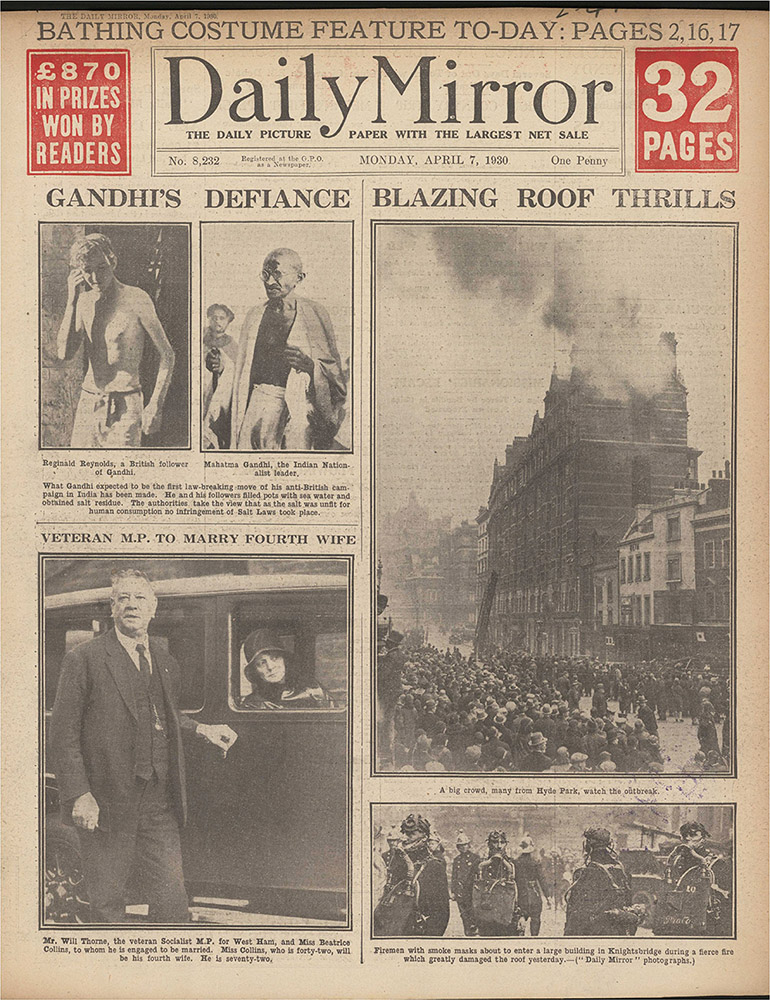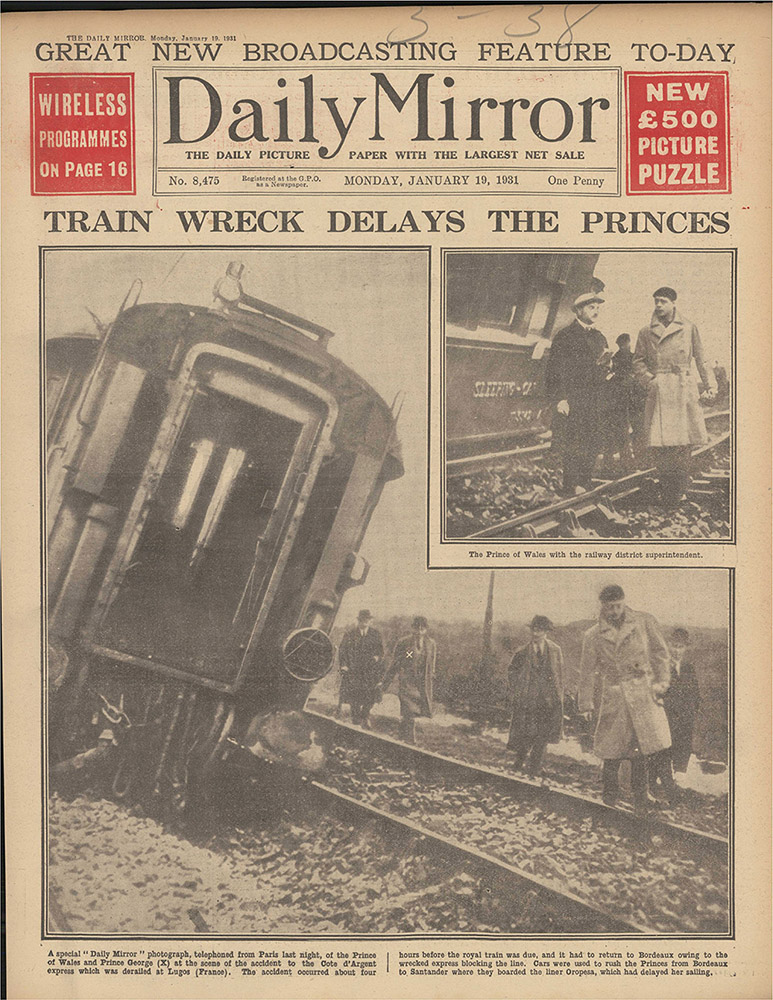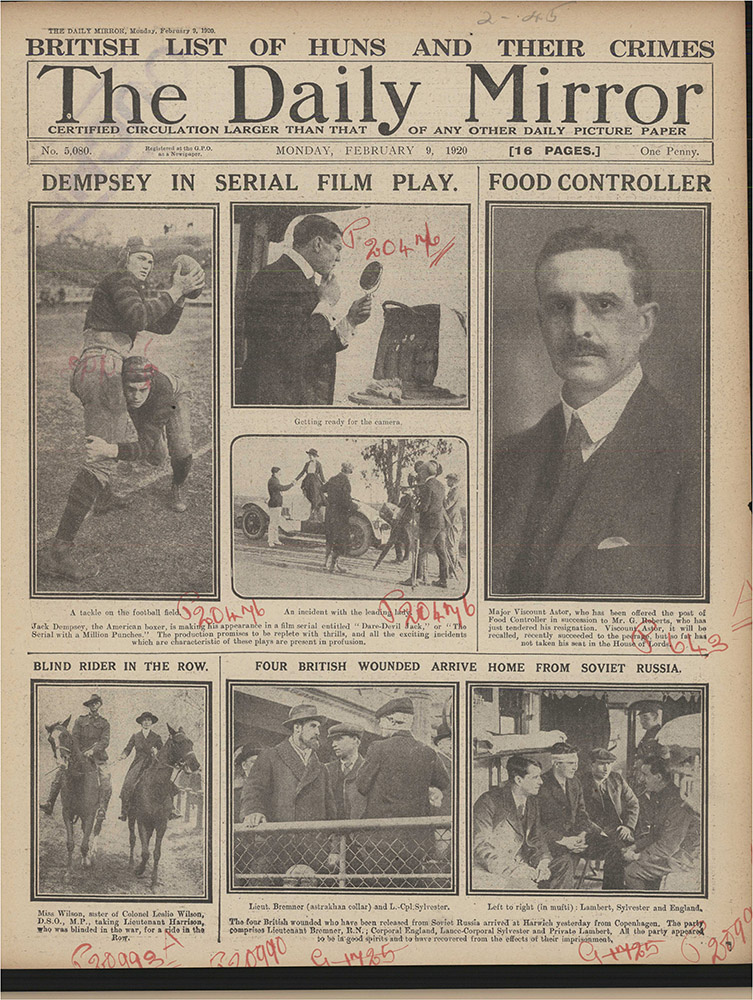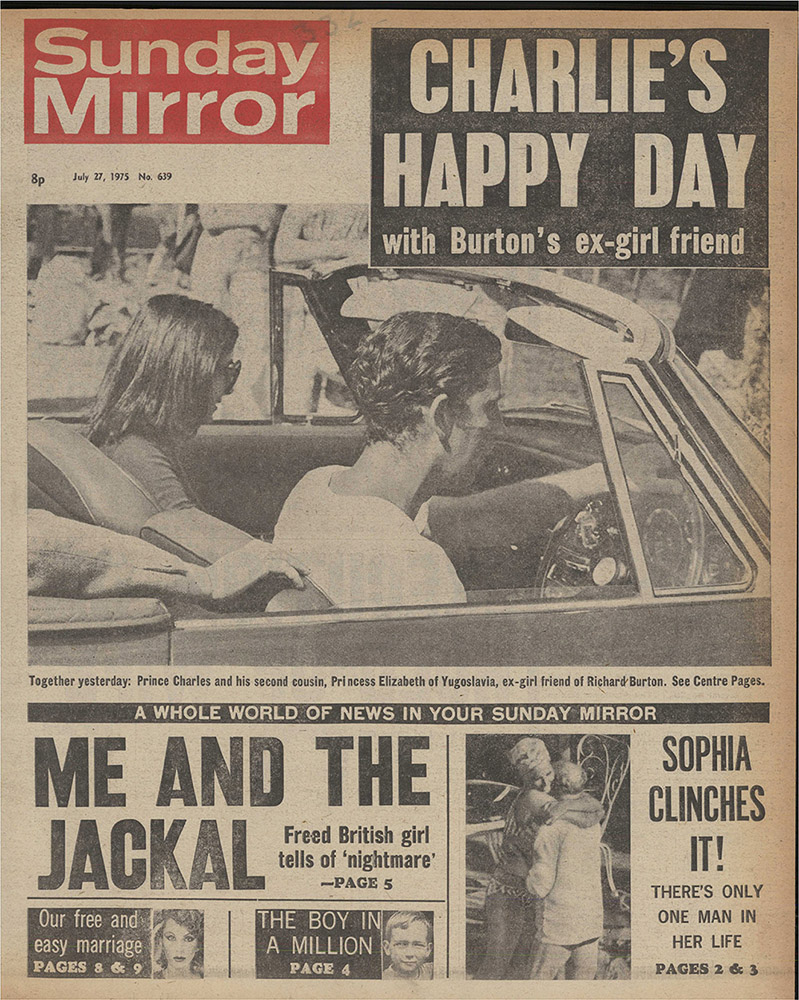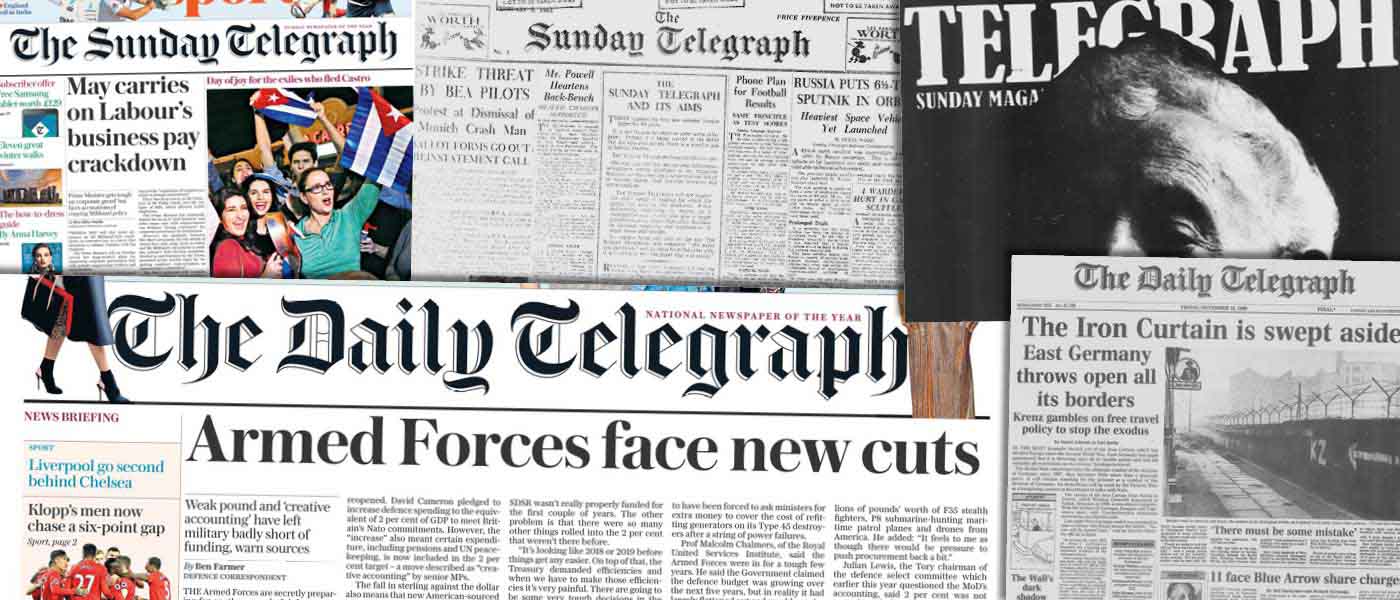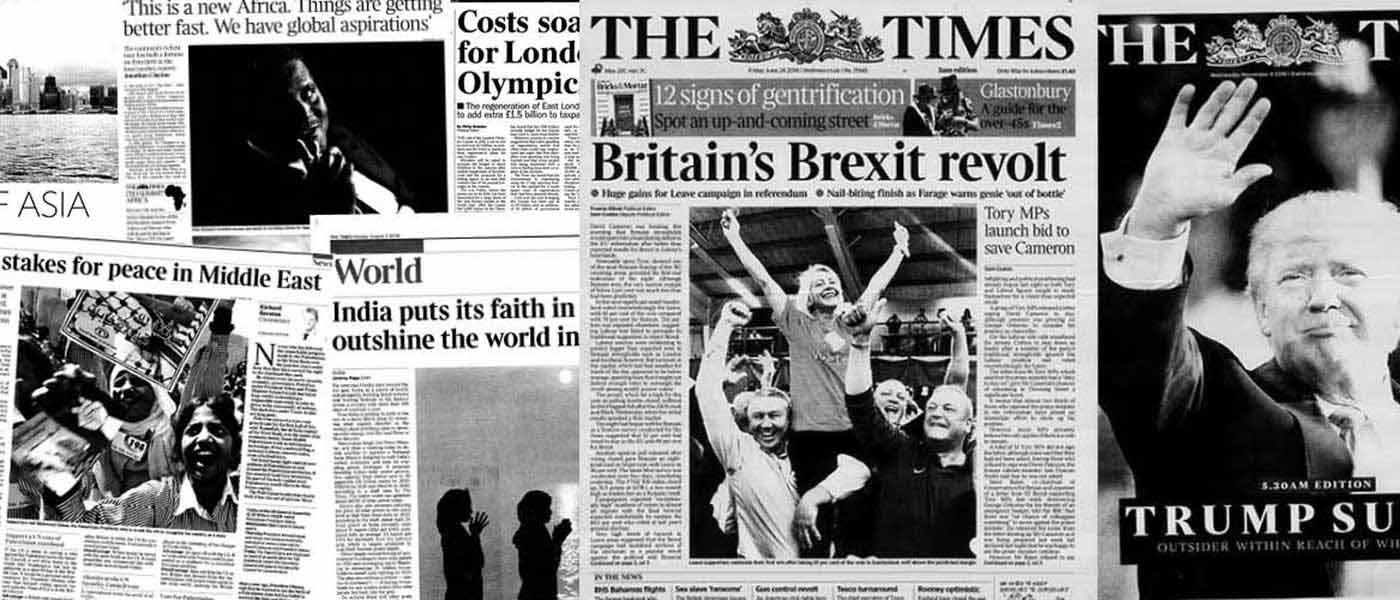Explore the influential mass-market alternative to broadsheets that changed the course of British newspapers and journalism.
This archive extends the ‘mass market’ content available in Gale Historical Newspapers. The Daily Mirror (working-class) and the Daily Mail (middle class) challenged the broadsheet dominance of newspapers such as The Times and The Telegraph, providing both an alternative view and journalistic style which went on to dominate the British newspaper market in the second half of the twentieth century.
“The Mirror is a sensationalist newspaper. We make no apology for that. We believe in the sensational presentation of news and views, especially important news and views, as a necessary and valuable public service in these days of mass readership and democratic responsibility […] Sensationalism does not mean distorting the truth. It means the vivid and dramatic presentation of events so as to give them a forceful impact on the mind of the reader”.1
Sylvester Bolam, editor of the Daily Mirror, 1949.
Started by Alfred Harmsworth (later Lord Northcliffe) in 1903, The Daily Mirror was influential in changing the course of British newspapers in the second half of the twentieth century, becoming Britain’s bestselling daily newspaper by 1949. Consistently left-leaning and populist to reflect the views of its target working-class audience, it offers a counterpoint to the more conservative newspapers that dominated the late nineteenth and early-twentieth centuries, such as The Times and The Telegraph.
The Daily Mirror was originally started as a journal for respectable women, run by an all-female staff, aiming at a previously neglected mass-market audience that were not catered for by the major daily newspapers aimed at the professional (male) reader. Northcliffe had misjudged the audience, and the first version of the Mirror was a financial disaster. The combination of bad judgement, technological developments in rotary printing, and the success of illustrated papers such as the Graphic led to a change of approach. Briefly becoming the Daily Illustrated Mirror, the all-female staff were replaced, and it moved to a style of journalism and visual presentation borrowed from the successful American dailies: bold headlines, sensationalist content, and everyday language.
In 1914, Northcliffe passed ownership of the Mirror to his brother Harold Harmsworth (Lord Rothermere), as he expanded his own newspaper ownership with new acquisitions including The Times. Rothermere’s right-wing politics saw the paper shift for a while, and readership declined among its core working-class readership. During this time, the Mirror’s biggest rival was another Northcliffe paper: the Daily Mail. Between the two newspapers, the Northcliffe’s had captured the mass-market audience: both populist in nature, the Daily Mail was primarily aimed at the middle-class reader while the Mirror catered for the working-class. The Mirror became the first truly ‘national’ newspaper in Britain when it opened a regional printing operation in Manchester to serve the north of England and Scotland, rather than a newspaper distributed around the country from London.
Beginning in 1934, an overhaul led the Mirror to become the bestselling daily newspaper in Britain in 1949, and by 1951 it was selling over 4.5 million copies a day, more than double the Daily Mail. During this time, the Mirror had separated itself from its competitors by becoming unashamedly populist, becoming the newspaper of choice for everyday people. It introduced the tactics used by American newspapers that followed on from ‘yellow’ journalism, focusing on sensation, simple language, and typographical changes like bold headlines to catch the eye. The strategy paid off as its new editorial stance—critical the officials and their institutions—resonated with the mass audience during World War II, and it achieved one of the largest readerships among the armed forces during the War.
The overwhelming financial success of the Daily Mail and the Daily Mirror during the mid-twentieth century—largely due to the lucrative advertising revenue gained from a mass market readership during a time of growing consumerism—started a change in British newspapers and journalism. Many other daily newspapers moved toward a tabloid approach as the business model became increasingly appealing, and those that did not began to struggle. While the Mirror continued to be successful, other significant rivals that remained closer to traditional ‘mass market broadsheets’ (such as the Daily Herald) disappeared.
The Mirror began to decline in prominence after the 1960s, as it failed to judge the impact that the rise of television and youth culture would have on newspaper readership. Attempting to move slightly upmarket as the working-class became better educated and more affluent, it moved in the wrong direction and began to lose its audience, not helped by then Chairman Cecil King using it as a mouthpiece to further his own political ambitions. This was worsened by the emergence of a new generation of tabloid newspapers, led by The Sun: which was a relaunch of the failing Daily Herald that the Mirror Group had sold to Rupert Murdoch a few years before. By 1978, The Sun had overtaken the Mirror as the bestselling daily newspaper.
After a decade of declining popularity and the political swing to Conservatism in the late 1970s leaving the newspaper catering for a smaller audience, The Mirror was sold to Robert Maxwell in 1984. When Maxwell died unexpectedly in 1991, the Mirror was left with significant debts, which led to its purchase by the Trinity Group in 1991, forming the Trinity-Mirror group (now Reach PLC). Despite the downturn in an increasingly competitive market since the 1980s, it remains one of the most historically significant newspapers in British history, prompting the change in approach that made it a distinctive voice among a market previously dominated by the broadsheets.
1 Bingham, Adrian and Conboy, Martin: Tabloid Century: The Popular Press in Britain, 1896 to the present (Oxford, Peter Lang Ltd., 2015), pp.15.
VP of Primary Sources publishing, Seth Cayley, gives a deeper look at the Mirror Historical Archive:
Look Inside
Additional Details
subjects covered
- Arts and Humanities
- Business & Economics
- International Economics
- Labor
- British Studies
- Communication & Media Studies
- Communication and Media Studies
- Economics
- English Language
- European Studies
- Finance
- Gender & Women's Studies
- History
- Journalism
- Marketing
- Politics
- Social Sciences
- Sociology
- Twentieth Century Studies
- Current Events
- WWI
- WWII
- Multidisciplinary
Platform Features & Tools
Digital Humanities Support
At request, Gale will deliver data and metadata associated with Gale Primary Sources collections for use in data mining and textual analysis, supporting the digital humanities as a growing area of scholarly research.
Cross-Search Capability
Search across the content of complementary products in one intuitive environment, enabling innovative new research connections.
Platform Tools
ReadSpeaker text-to-speech technology, and on-demand text translation into 12 languages


